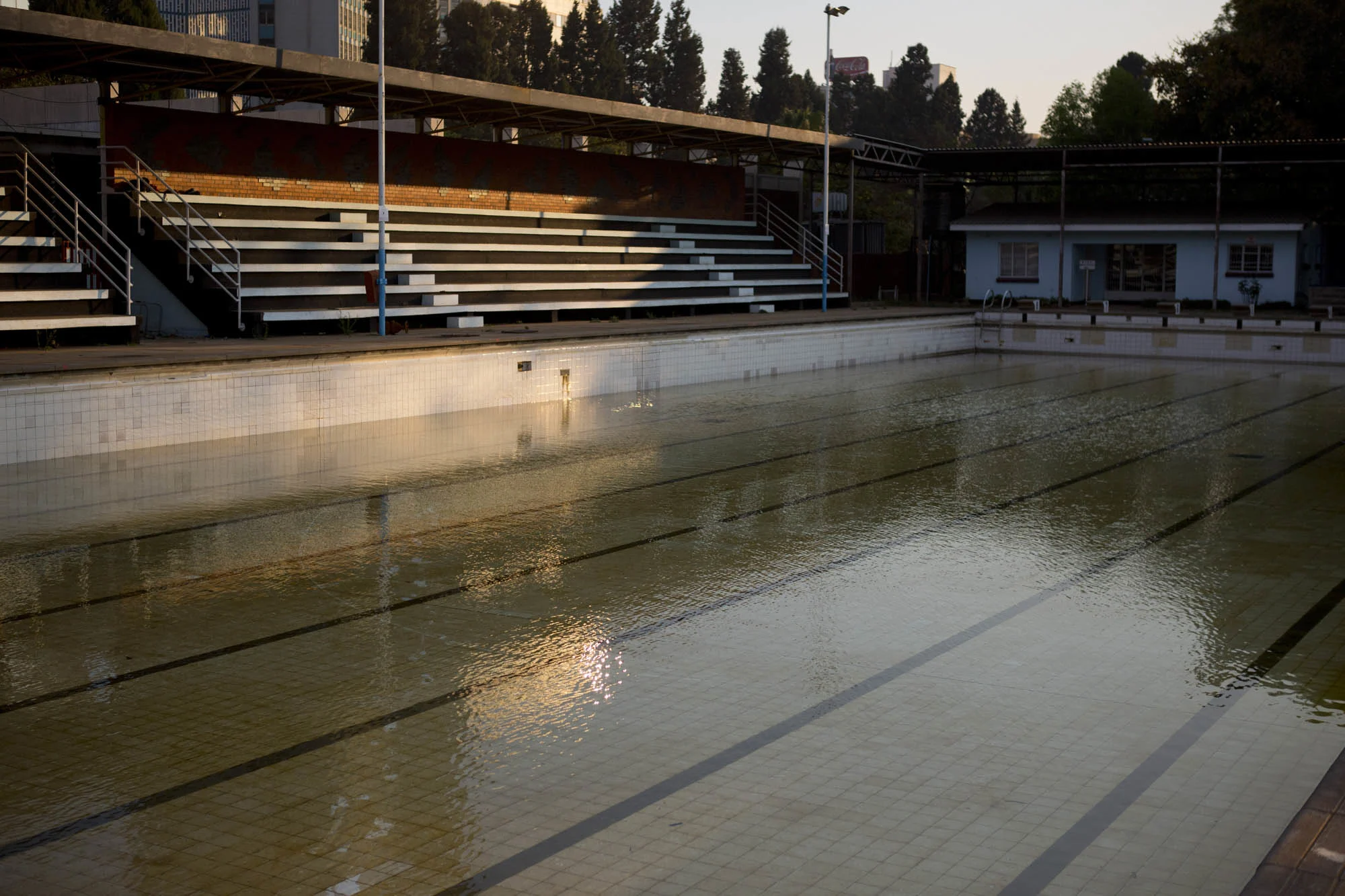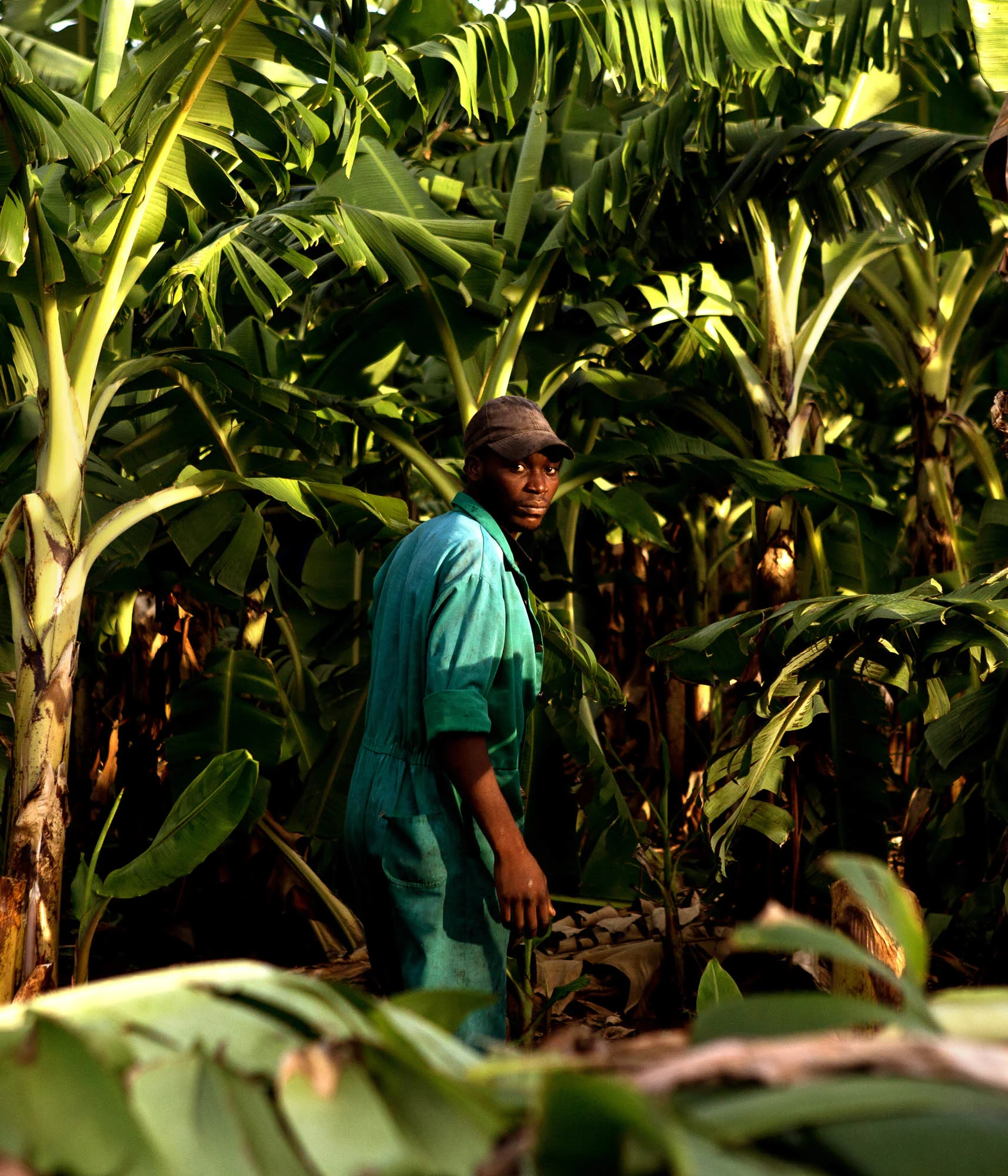

From its pink flowers to its magical waters, Jono Terry has looked long and hard at Zimbabwe. Writer Alix-Rose Cowie discovers how the photojournalist used his own privileged upbringing as a white African to reveal the layers of complicated history inherent in the nature and mythology of the place. What, he asks, is the real and fullest version of its story?
Bougainvillea is photographer Jono Terry’s favorite plant. Growing widely, and wildly, around Zimbabwe, where he was born and raised, the thorny branches grow around whatever is in its path and burst into cascades of hot pink, papery flowers. An alien species planted by colonizers to add some color to the bushveld, they’ve come to be entwined with the landscape. “Sometimes I see them as beautiful plants, sometimes I see them as a sprinkling of open wounds,” Terry writes in the first chapter of “Rhodesiana Africanus”, a three-part exploration of identity, belonging and colonial legacy in Zimbabwe. As the grandson of British immigrants to what was previously the colony of Rhodesia, he questions his contentious place as a white man in Africa. “I use my work to locate myself: past, present and future in Zimbabwe,” he says. “I don't know if I would’ve been able to do that without photography.”


Terry was born seven years after Zimbabwe’s independence in 1980. After school, he left to study journalism in neighboring South Africa specializing in photojournalism. Returning to Harare, he worked for the main independent media’s newspaper as a staff photographer in a charged political environment. “Young and naive, it made me feel like I was changing the world or at least proactively engaging in politics and society in Zimbabwe,” he remembers. It was where he began to become aware of a Zimbabwean history broader than the version of events he’d been exposed to as a child.
Working for an independent press in 2010s Zimbabwe, Terry was harassed and even arrested. The invigorating response he felt at this quickly wore off, and he moved to London, where some years later he completed an MA in Documentary and Photojournalism. This master's degree was a major turning point. He realized the potential for the stories that images could tell and started thinking more long-term. “I came to a point where I realized there’s a big gap in history, knowledge and narrative in post-colonial Zimbabwe,” he says. “It’s an ugly past that people are quite happy to not talk about. We don’t really talk about Rhodesia, we don’t really talk about the continual effects and manifestations of colonialism and white privilege, and all of these pretty big themes. I knew what I wanted my work to be about.”

Belonging and home is at the core of all Terry’s work. He splits his time between London and Zimbabwe to make “Rhodesiana Africanus”. “Zimbabwe is my home,” he says. “I definitely identify and see myself as a Zimbabwean. But I also understand that comes with baggage, acknowledgment and acceptance that the only reason that I am in Zimbabwe is because my ancestors were colonizers.”
The third and most recent chapter is about Lake Kariba, the world’s largest manmade lake. “It’s most white Zimbabweans’ favorite place,” Terry says. Formative memories were made for him and his peers at the water; family road trips, a first fishing trip with dad, student holidays after graduation. “We had a kind of privileged access to this beautiful place,” he says. Relearning the history of Kariba through his research, he began to question what this enjoyment for him as a white Zimbabwean cost the rest of the population. “The creation of the Kariba dam wall and the subsequent flooding of the valley displaced 57,000 Tonga farmers. And after it got built, everything was geared towards white tourism, we erased a lot of indigenous culture, folklore and mythology—a way of life along the river,” Terry explains. “We have one story that we’ve been told about our collective identity as white Zimbabweans, but often that is, obviously, not the whole truth.”



Terry spent time learning and documenting how people experience Lake Kariba beyond his own memories of it. One of his photographs from the series, shot in a bar in Kariba Heights, was taken while watching a Manchester City vs Chelsea game with a group of men, bathed in artificial blue light and dissipating cigarette smoke. “Part of my desire to document Kariba was trying to challenge myself and my own limited white experience of the lake,” he says. “So I took a lot of time to live in Kariba as a local where I otherwise wouldn’t go as a white tourist. I visited this nightclub as part of learning more about the social fabric and community of Kariba itself.”
In his attempt to reveal the whole story, Terry realized he needed more than images to do it. He feels a responsibility to make sure people understand what his photographs mean. Ideally, “Rhodesiana Africanus” will be presented with writing, interviews and anecdotes, and personal archives. For example, he’s been collecting interviews with people who remember being forcibly removed when the lake was built. “I feel like it’s not enough to be vague and wishy-washy about these things,” Terry says. “I don’t want to be open for interpretation, I need to make my feelings and intent clear.” He doesn’t have a particular audience in mind for this work but hopes it can be understood even if you don’t know where Zimbabwe is. “The concepts of home, identity and colonialism have touched the whole world,” he says. “There seems to be a bit of a reckoning with some of that now, which is great, though obviously long overdue.”


Terry lugs two huge Pentax 6x7s around when he’s shooting in Zimbabwe. Shooting on film has meant slowing down which also creates space to really engage with the people who sit for portraits. He’s found that sometimes interpersonal skills are more important than being a technically proficient photographer. “I think you make good photographs because you build a good relationship with people,” he says. “I have pretty open, honest discussions with people about my work.” Conversations that he hopes will continue long after the photographs are developed.

